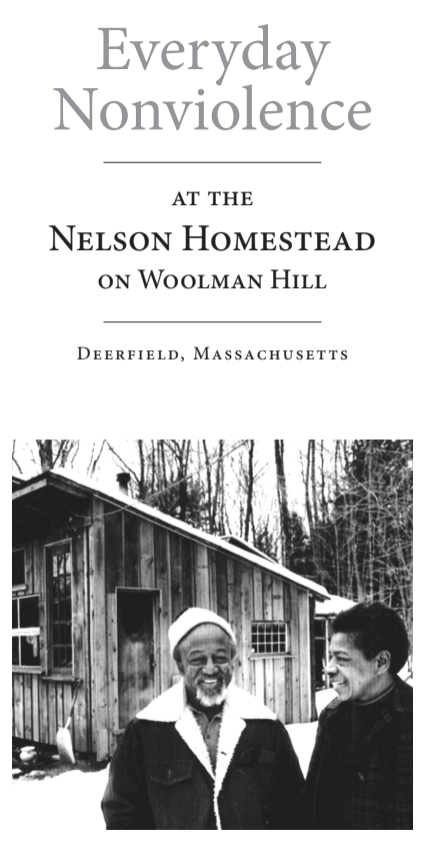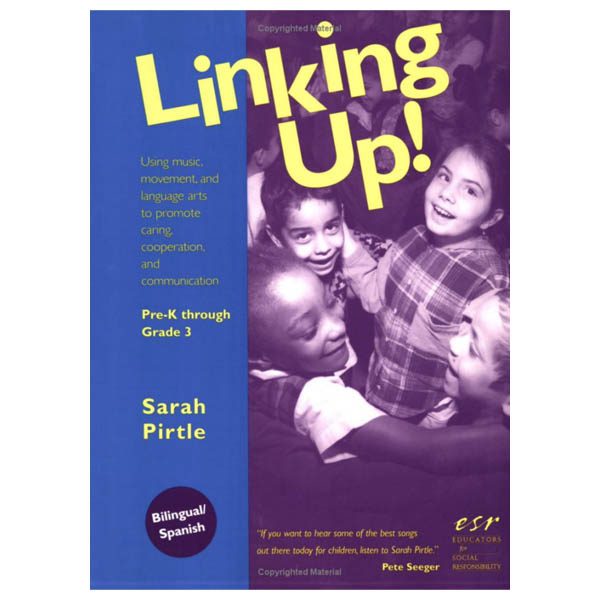Ballad of Juanita Nelson opens in a new tab
Words and music by Sarah Pirtle
© 2005 Discovery Center Music, BMI
Lyrics:
First verse:
We rushed to the train in the station in Ohio.
We landed in the back car, the worst car that was plain.
Spider webs and dust piles, all the seats were torn up
Only for Black passengers, a segregated train.
I was just sixteen. It was in the 1930’s.
I spoke up ‘cuz I knew what I did know.
I looked at my Mama, and she looked back at me.
My heart was beating hard. I knew where I had to go.
Chorus:
Whatever age I be, I will follow what’s true for me.
Oh, the world can’t change me. The truth inside has claimed me.
I must do what I feel is true.
Second verse:
The train left the station. I left where I was sitting.
I knew what was ahead before we traveled very far.
Mama caught my eye. She didn’t try to stop me.
I told her how I felt–I have to leave this car.
No, I would not stay in the place they tried to put me.
I couldn’t breathe, my hands were tight.
I entered the next train car with just white people sitting.
I stayed with my convictions. I sat down. It was right.
Third verse:
I sat down on those cushions in the white cars.
I breathed, and I got up whenever I felt through.
The porter caught my eye. He didn’t try to stop me.
He said he was afraid of what someone might up and do.
I was more afraid of silencing my conscience.
I wouldn’t let cold fear start running me around.
I sat in every white car on that Jim Crow train to Georgia.
I did what I had to do. I sat down.
Fourth verse:
No one threw me off the train. The conductor didn’t stop me.
I made my way from car to car, then back to Mama’s place.
I don’t recall the passengers. I just recall their silence.
And the look of love that I saw upon my Mama’s face.
Background of the Song

This recording is dedicated to Juanita Nelson. This song not only describes what Juanita was moved to do at age sixteen but speaks of how she has lived her whole life.
Juanita grew up in Cleveland, Ohio. Three years after she refused to stay in the back car of a segregated train, Juanita sat down in a Woolworth Lunch Counter in 1943, a nineteen-year-old sophomore purposefully ordering a cup of hot chocolate with friends. This action helped launch the Howard Civil Rights Committee which succeeded in desegregating the Little Palace Cafe on the edge of the Howard University campus in Washington, D.C. During this sit-in action, she was arrested for the first time.
She has used non-violent direct action to confront injustice throughout her entire life in public actions and has made her daily life an expression of nonviolence. She and her husband Wally Nelson were active in the Civil Rights movement since the 1940’s, part of C.O.R.E., Peacemakers, and Pioneer Valley War Tax Resistance. In the 1970’s they moved to Woolman Hill in Deerfield, Massachusetts, organic farmers, living in a home without electricity or running water, and I met Juanita in 1979. Since then she’s been a spiritual mother for me, my son, and for many. The song began when two girls from Journey Camp at Woolman Hill and I interviewed Juanita: Eva Botkin-Kowacki and Mackenzie Daigle. They asked her what she did when she was their age, and this is the story she told.
On the recording, “Let My People Go,” Juanita says, “Who are my people? I think of Wally’s favorite T Shirt. I now wear that shirt. Printed in appropriate colors are the words — Black, White, Yellow, Red, Brown. Each is crossed out. Left undefaced is the word human, written in green. Let all our people go to live in peace and equality.”


